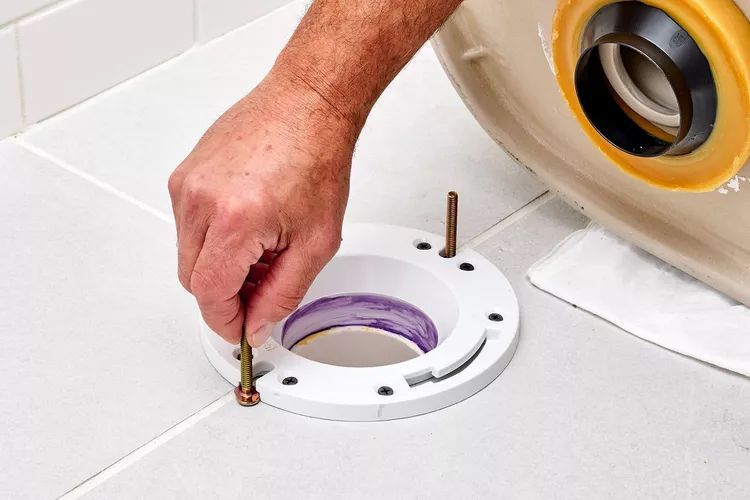How Often Should a Toilet Flange Be Replaced?

The unsung hero of the bathroom, the toilet flange plays a far more important role than its low profile may suggest. While the toilet itself takes center stage, it’s the flange that keeps everything secure and functioning properly — anchoring the toilet to the floor and connecting it to the drain pipe to ensure waste flows out smoothly. Without a properly working flange, even the best toilet won’t do its job.
While flanges are generally durable, knowing when and why they need to be replaced is key to avoiding bigger plumbing issues down the line.
In this guide, we’ll walk you through everything you need to know about toilet flange lifespan, warning signs of failure, and when it’s time to call in a professional at Superior Plumbing.
What Is a Toilet Flange?
A toilet flange, also known as a closet flange (from the toilet’s previous designation as the water closet), is a critical plumbing component that connects your toilet to the home’s drain system while also anchoring it securely to the floor. It creates a watertight, stable connection using a wax ring to prevent leaks, odors, and sewer gases from escaping into your bathroom.
When properly installed with T-bolts and rust-resistant screws, the flange keeps the toilet firmly in place. Toilet flanges are typically made from materials like PVC, brass, stainless steel, or cast iron, each offering different advantages. PVC is lightweight and rust-resistant, making it ideal for modern homes, while brass and stainless steel are more durable for high-moisture environments.
A damaged or loose flange, on the other hand, can lead to leaks, floor damage, and an unstable toilet and keeping it in good condition is essential for the long-term health of your bathroom plumbing.
How Often Should a Toilet Flange Be Replaced?
There’s no set schedule for replacing a toilet flange and replacements are typically done when signs of damage appear. A well-installed, high-quality flange can last 10 years or more, but constant exposure to moisture and pressure means even the most durable materials will eventually wear out.
If your flange was replaced recently and these problems are already occurring, it could point to faulty installation, in which case, it’s best to call a licensed plumber to correct the issue properly.
What Are the Signs That a Toilet Flange Needs Replacing?
A failing toilet flange often makes itself known through leaks, odors, or even a wobbly or weak flushing toilet. Since the flange plays a crucial role in both sealing your toilet and keeping it stable, any damage or deterioration can lead to plumbing issues and floor damage if left unchecked. Here are the most common signs that your toilet flange may need to be replaced:
Wobbly or rocking toilet
If your toilet shifts or rocks when you sit on it, it’s often a sign that the flange is loose, damaged, or no longer securely attached to the floor. Even without visible leaks, a wobbly toilet indicates that the wax ring and flange aren’t providing proper support and is often the first indication homeowners have that something’s wrong.
Persistent sewer odors
Unpleasant smells around your toilet could mean the wax ring has failed, allowing sewer gases to escape into your bathroom. This is not only unpleasant but also a potential health concern if not addressed quickly.
Water pooling at the base
If water is collecting where your toilet meets the floor (and there’s no sign of a tank or supply line leak) the flange or wax seal may be compromised, allowing water to seep out during flushes.
Soft or spongy flooring around the toilet
A “springy” feel underfoot near the toilet is often a red flag that water is leaking and damaging the subfloor. If left unchecked, this can lead to rot, mold growth, and costly structural repairs.
Damaged or lifting flooring
If tile or vinyl flooring near the toilet is cracking, lifting, or buckling, it could be caused by a leaky flange soaking the floor underneath. Moisture breaks down adhesives and warps the floor, signaling a bigger issue below the surface.
Can a Toilet Flange Go Bad Even If the Toilet Seems Fine?
Yes, absolutely. A toilet flange can fail even when everything appears normal on the surface. Just because your toilet looks fine doesn't mean the components underneath are working as they should.
Over time, the flange or wax ring can become cracked, misaligned, or worn out, leading to hidden leaks and long-term damage. Even if your toilet isn't visibly leaking, subtle signs like odors, soft flooring, or occasional movement could indicate a flange issue.
Ensure Your Toilet Flange Integrity with Superior Plumbing
Your toilet flange may be out of sight, but it plays a crucial role in keeping your bathroom clean, secure, and leak-free. Whether you’re dealing with odors, leaks, or a wobbly toilet, Superior Plumbing is here to help. Our licensed professionals can quickly assess and repair flange issues to restore your bathroom’s functionality and prevent costly damage.
Schedule your service with Superior Plumbing today and get peace of mind that your toilet flange is properly sealed and secured.
